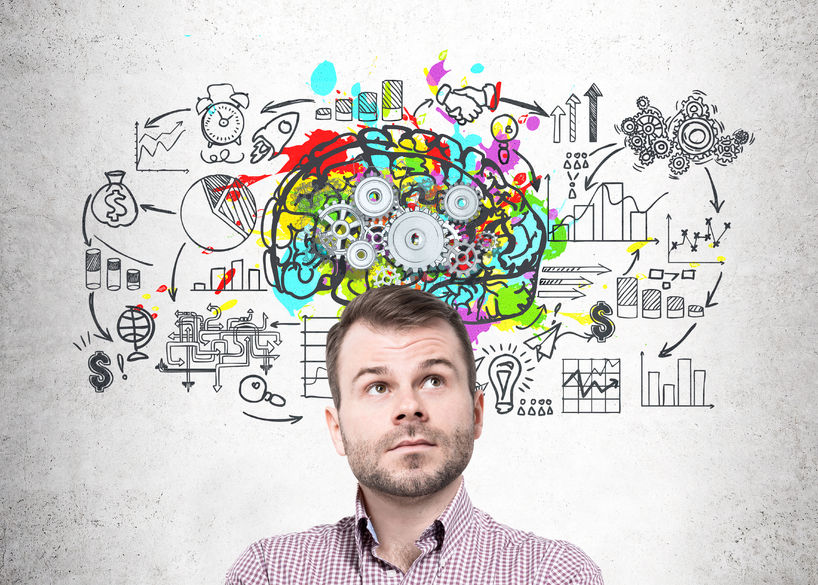Hei,
Nyt on moni oivaltanut sen, että kyky hyödyntää tekoälyä kokonaivaltaisesti on vahvasti sidoksissa organisaation datavalmiuksiin. Mitä paremmat datavalmiudet, sitä lähempänä ollaan AI:n todellista käyttöönottoa.
Haastattelin yhtä data-alan johtavaa vaikuttajaa Barry Devliniä tekoälystä ja Iot:sta. Ne tulevat koskemaan jokaista teollisuuden alaa, hieman samaan tapaa kuin Internet aikoinaan, ellei jopa suuremmin. Barry tulee kouluttamaan aiheesta myös Helsinkiin, odotan tilaisuutta itse innolla.
Lue alta koko haastattelu.
Ari: Barry Devlin, you are one of most well-known authorities and speakers in the business intelligence realm. We have seen it all starting off from relational databases evolving to user friendly BI/DW software solutions built entirely on cloud environments boosted by big data technologies. What would be the three key trends in the data business for the near future?
Barry: At a high level, I expect that the three key trends will be continuations of what has been happening over the past decade: (1) the collection of ever more data, (2) increasing use of algorithmic approaches to using this data, and (3) continuing efforts to make business entirely data driven based on the first two trends.
More interesting, I think, is to consider how these trends will interact to drive deeper thinking about the use of data not only in the business sphere, but in society in general. For example, while we are still mostly comfortably about giving social media companies access to most aspects of our personal lives, as data collection becomes fully real-time and pervasive (as in autonomous vehicles), and analytics leads to ever more automated decisions about financial offers and other actions, I believe we will see push-back from the public against these trends. On one hand, privacy campaigners will increase pressure for new legal controls and frameworks. On the other hand, members of the public will change their behaviors in both overt and covert ways to retain control of person data.
For me, the jury is still out on whether the above trends will lead to their logical conclusion of a technological autocracy or can be diverted for the betterment of humanity.
Ari: Many business leaders believe that AI will have a transformative effect on their industries, yet the changes that we’ve seen thus far are quite limited. Are the changes happening somewhere else? Should we be afraid of new competition that we are not aware of?
Barry: I’d dispute the suggestion that the changes we’ve seen so far are quite limited. I believe they are radical, but still in the early stages. For example, in medicine, machine learning image recognition in many areas of radiography is now more reliable than humans. This will have far-reaching effects on the profession of radiology and on the “business” of medicine.
The effect of AI in the motor industry is already visible in the prototypes already on the roads and the plans of motor manufacturers. The knock-on effects in everything from automobile insurance to city planning are already being discussed.
While there will be winners and losers, for sure, discussing AI in terms of competition over-simplifies the wide-spread and, in many cases, unanticipated impacts of the spread of this technology. AI will enable and enormous acceleration in automation of many back-office and administrative tasks that will affect all industries and businesses alike. The second-order effect of decreased buying power across society will disrupt not just simple competition, but the foundations of the capitalist economic model.
Ari: The term “artificial intelligence” was first introduced by John McCarthy at a Conference at Dartmouth College, New Hampshire, in 1956 yet people don’t exactly know what it is. I think most people perceive it as something between IBM’s Deep Blue’s chess-playing computer and humanlike robots from a science fiction movie. How would you define the concept of AI?
Barry: At one level, artificial intelligence is simple. Take what we consider to be human intelligence and put it in a machine. The problem is that “intelligence”, like beauty, is very much in the eye of the beholder. I think it’s fair to say that the basic if-then-else construct of programming is a simple form of intelligence and thus of AI. Of course, we are interested today in something more intelligent, and the key characteristic of modern AI is the ability of the machine to learn from the real world. Image recognition shows this very well. It is clearly impossible to do categoric, if-then-else image recognition in the traditional programmatic model. AI systems learn how to recognize structures in an image either from large numbers of labelled examples or even through unsupervised learning.
Another consideration is the scope of the intelligence. Today’s AI is rather limited in scope: one system is good for one particular problem or, to a limited extent, to one class of problem. Artificial general intelligence is the next great frontier, leading us to think of Terminator or the Matrix. Fortunately, we’re not there yet!
Ari: We currently have machines learning complex classification and failure prediction. There are already assistant apps and product recommendation solutions out there. We all know that companies such as Google, Facebook and Netflix are advanced in new technologies. What is the status of AI solutions? How is it applied today?
Barry: It’s still early days, with a lot of hype and “AI-washing” going on. In terms of serious AI use, natural language processing (NLP) and image recognition are seeing real applications. Recall that these are foundation technologies for more specific, business-related applications. So, NLP, for example, can be applied to many types of real business interactions such as call centers and voice control. These types of applications become part of day-to-day business operations.
Another area where AI is appearing is in business intelligence, data management and analytics. In the latter case, AI is a natural extension of existing algorithmic techniques. Much of the current focus here is on marketing and customer behavior analysis applications. However, there are emerging examples of using AI to address some of the long-standing problem of context and business metadata, particularly as applied to externally sourced information.
Ari: Let’s say I am CEO of any given company and come to the realization that AI will change everything at some point. What would be the first concrete steps to take to be in the forefront of the change? I would say start off by collecting and managing all your data. Would that be very far from the truth?
Barry: In data warehousing, I have never been a fan of the build-it-and-they-will-come approach. I believe that some current collect-it-and-we’ll-find-a-use-case suggestions for AI (and IoT) will be equally unhelpful in delivering real business value. For me, the starting points must be first strategy and then architecture.
Strategy involves getting an understanding of what AI can really do—both today and in the coming few years—and gaining a deep understanding of which parts of the broad AI spectrum can apply to your business. This is a tough task. AI is proving very disruptive both within and across industries, so the strategic thinking should be very broad and “out of the box”. Understanding and applying the concepts of augmentation vs. automation, which I’ll speak about at length in my seminar, will be very important in defining strategy
By architecture I mean particularly information architecture. The data that will drive AI is rather different to that with which most IT departments are familiar. Internet of Things data will be an important foundation, and it has some very interesting characteristics.
Ari: Let’s talk about the Internet of Things then. That’s a newer concept than AI and perhaps easier to grasp. For those who are not experts on the matter, can you give a quick description of it?
Barry: At one level, it’s very simple. Attach sensors to every item in the physical world (including, by the way, people), measure as many variables as possible, and collect and analyze the data produced to understand what’s happening, predict what will happen, and influence the outcome where possible. The devil is in the detail, of course. Which variables, how often, how reliably, what analytics, and so on? For people coming from the traditional BI and data warehouse world, the important point to remember is that this is all about the “real world” as opposed to the business processes we monitored in the past. And it is much more chaotic in its behavior and when we try to influence it, we are directly impacting real lives.
Ari: People have talked a lot about IoT for the past five years, but somehow it feels that not much has happened, at least from a consumer perspective. We still don’t have all our devices nicely connected and monitored. Of course, you can have it done, but it requires quite a lot of work, know-how and investments. There are not that many off-the-shelf packages for consumers, are there?
Barry: I disagree. To me the IoT is already so pervasive that it has become largely invisible. Smartphones are the vanguard and they are ubiquitous. They have a dozen or more sensors, are continuously connected, and sharing data wherever they go. Our transport—cars, trucks, airplanes—and the infrastructure they use is already highly instrumented and becoming more so every day. Smart TVS monitor our actions and Amazon is putting Alexa’s Echos and Dots into every other room in the home.
Of course, there is still an enormous way to go to reach the billions of devices being talked about and in creating standards of communication, security, privacy (I hope) and so on. Indeed, it is not easy for consumers to join up all their devices themselves or to purchase all-inclusive IoT packages, but I suspect that the direction will be for large corporations and governments to dominate the growth of the IoT.
Ari: I think industrial solutions are much more developed. Then there are startups and bigger companies offering very advanced IoT solutions to almost every industry sector. Have you got some good case-examples of existing IoT solutions?
Barry: The reality today is that nearly every advance in manufacturing, utilities, retail, etc. depends to a greater or lesser extent on IoT, usually in combination with AI (which is why I brought the two together in my seminar). From continuous monitoring of jet-engine performance to Amazon Go staff-free stores, the use cases are already too numerous to list.
Ari: We have Stephen Brobst (CTO of Teradata) coming in Finland earlier this year. He talked about an Internet of Everything. According to him, the Internet of Everything describes the current development better than IoT. Due to the price decline of sensor technology, he said, sensors will be everywhere. If you can imagine a thing that might someday be connected, it will be connected. Is there any limit to the proliferation of internet connected things?
Barry: I agree that sensors are becoming ubiquitous and saying “Everything” rather than “Things” captures that thought. On the other hand, it’s not really the “things” that are important in this development; it’s the data they produce. So, I could also argue for an “Internet of Machine-Generated Data” … but that’s a bit of a mouthful!
Is there a limit to the proliferation of connected things? Yes, I believe so. There is a cost to collecting, managing and analyzing all this data. That must be balanced against the benefits. The advantages of control must be balanced against the disadvantages of loss of privacy or the impact on democracy. Consideration of these limits has only barely begun, but knowing the workings of the IT industry, that’s hardly surprising.
Ari: Many people that come to our seminars are interested in data and how it can utilized . Obviously when increasing number of machines and devices are connected to the internet, the amount of data will be massive. What are the implications of IoT to data business?
Barry: The combination of IoT and AI represent the biggest sea-change in our industry since the invention of the computer itself. We must deal not just with huge volumes of data but with data having very different characteristics than heretofore. The processes we have used to manage and analyze data are changing fundamentally. The role of people in using data is about to be thoroughly disrupted. All of these factors will spill beyond the walls of or organizations. Data professionals will have to step up to important ethical responsibilities for the outcomes of their data decisions. The implications for data professionals are enormous.
Ari: Your seminar is titled Delivering a Digital Business with Artificial Intelligence and IoT (Helsinki 15.11-16.11.2017) What would be the key takeaways from the seminar?
Barry: The three key takeaways are:
1. Adoption of AI and IoT will overturn almost every aspect of current business and IT practices and processes. Getting business and IT aligned and walking the same path will be essential.
2. Defining a strategy and applying an architecture that covers this breadth and scope is the first step in preparing for the challenges of digital business. Speed is of the essence, because the new technology is evolving exponentially.
3. Even as the digital business emerges, the traditional business must continue to function and succeed. Rip-and-replace is not an option; the solution must be built on the existing data management environment and skills.
Barry Devlin tulee vetämään ajankohtaisen valmennuksen juuri kyseisestä aiheesta:
Delivering a Digital Business with Artificial Intelligence and IoT, 15.11.2017 – 16.11.2017 Paasitorni, Paasivuorenkatu 5 A
Lue tilaisuudesta lisää tästä


